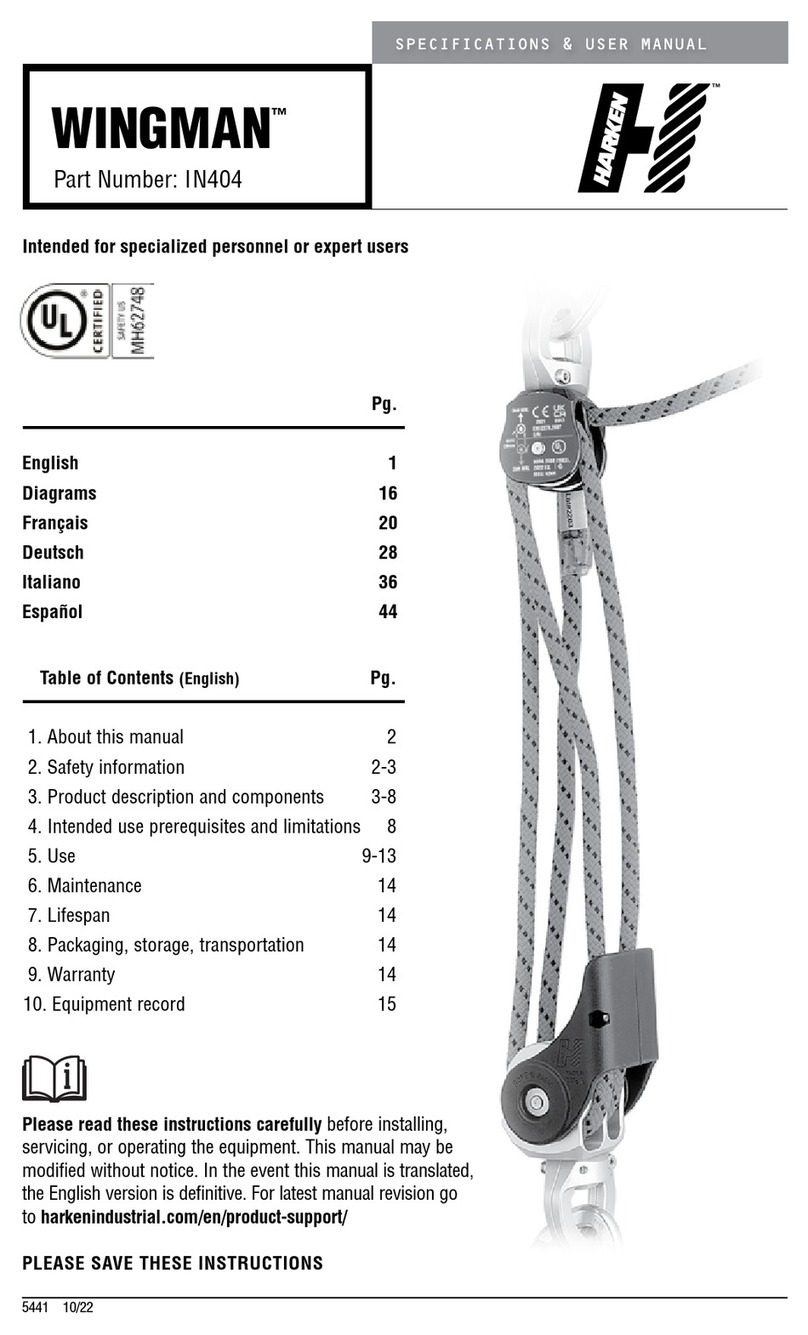8 ENGLISH 25-05-18
General Information
STANDARD REFERENCES
The device has been manufactured in conformity with the TECHNICAL REGULATIONS listed below:
TECHNICAL SUPPORT INFORMATION
The PowerSeat is covered by a warranty, as laid down in the general conditions of sale. If during the warranty
period the device proves defective or suffers breakages, as indicated in the warranty, the manufacturer, after
checking the device, will repair or replace the defective components. You are reminded that modifications
carried out by the user, without explicit written authorisation from the manufacturer, will invalidate the
warranty and relieve the manufacturer of any responsibility for damage caused by the defective product. The
same considerations apply when spare parts that are not original or different from those explicitly indicated by
the manufacturer as “safety devices” are used. For all these reasons we advise customers to contact Harken
Technical Support.
Reference technical standards
UNI EN ISO 12100:2010 Safety of machinery -- General principles for design -- Risk assessment and risk reduction
UNI EN ISO 13857:2008 Safety of machinery -- Safety distances to prevent hazard zones being reached by upper and lower limbs
UNI EN 349:2008 Safety of machinery - Minimum gaps to avoid crushing of parts of the human body
UNI EN 14118:2018 Safety of machinery - Prevention of unexpected start-up
EN ISO 13849-1:2016 Safety of machinery – Safety-related parts of control systems – Part 1: General principles for design
EN ISO 13849-2: 2013 Safety of machinery – Safety-related parts of control systems – Part 2: Validation
UNI EN ISO 13732-1:2009 Ergonomics of the thermal environment - Methods for the assessment of human responses to contact with
surfaces - Part 1: Hot surfaces
UNI EN 614-1:2009 Safety of machinery - Ergonomic design principles - Part 1: Terminology and general principles
UNI EN 614-2:2009 Specification and qualification of welding procedures for metallic materials - Welding procedure test - Part
2: Arc welding of aluminium and its alloys
UNI EN 14120:2015 Safety of machinery - Guards - General requirements for the design and construction of fixed and movable
guards
UNI EN 1005-1:2009 Safety of machinery - Human physical performance - Part 1: Terms and definitions
UNI EN 1005-3:2009 Safety of machinery - Human physical performance - Part 3: Recommended force limits for machinery
operation
UNI EN 1005-4:2009 Safety of machinery - Human physical performance - Part 4: Evaluation of working postures and move-
ments in relation to machinery
UNI EN ISO 3746:2011 Acoustics - Determination of sound power levels and sound energy levels of noise sources using sound
pressure - Survey method using an enveloping measurement surface over a reflecting plane
UNI EN ISO 11204:2010 Acoustics -- Noise emitted by machinery and equipment -- Determination of emission sound pressure lev-
els at a work station and at other specified positions applying accurate environmental corrections
UNI EN ISO 4871:2009 Acoustics - Declaration and verification of noise emission values of machinery and equipment
UNI EN ISO 11806-1:2012 Agricultural and forestry machinery - Portable hand-held combustion engine driven brush cutters and grass
trimmers - Safety requirements and testing
UNI EN ISO 7000:2014 Graphical symbols for use on equipment -- Registered symbols




























